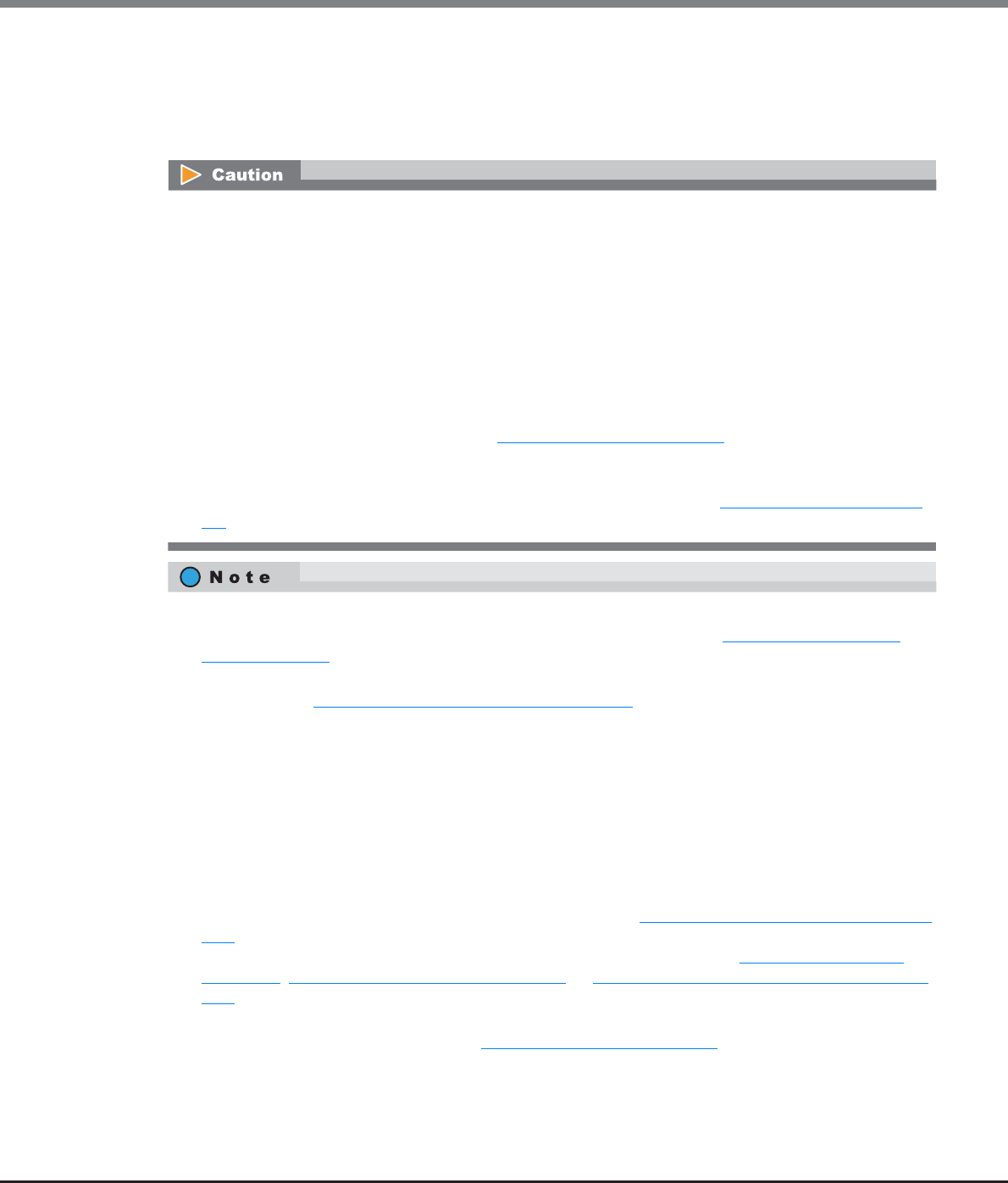
Chapter 8 Advanced Copy Management
8.2 Functions in the Action Area for Advanced Copy
ETERNUS Web GUI User’s Guide
Copyright 2013 FUJITSU LIMITED P2X0-1090-10ENZ0
312
ODX Buffer Volume
• One ODX Buffer volume can be created in the ETERNUS DX Disk storage system.
• The type of the ODX Buffer volume is "Standard", "TPV", or "FTV".
• The capacity of an ODX Buffer volume is 1GB - 1TB.
• An ODX Buffer volume can be created when the ODX function is enabled.
• The ODX Buffer volume must be created with the ODX function.
• If a Thin Provisioning license is not registered, a "TPV" or an "FTV" type ODX Buffer volume cannot be
created.
• When creating an "FTV" type ODX Buffer volume, use CLI. GUI cannot be used to create an "FTV" type ODX
Buffer volume.
• When encryption mode is disabled, an ODX Buffer volume encrypted by CM cannot be created. Note that
when SEDs are not installed in the ETERNUS DX Disk storage system, an ODX Buffer volume encrypted by
SEDs cannot be created.
• If the maximum number of volumes is already registered in the ETERNUS DX Disk storage system, an ODX
Buffer volume cannot be created. Refer to "5.2.1 Create Volume" (page 96)
to check the maximum
number of volumes for the ETERNUS DX Disk storage system.
• If the maximum capacity for TPVs or FTVs is already registered in the ETERNUS DX Disk storage system, a
"TPV" type or an "FTV" type ODX Buffer volume cannot be created. Refer to "5.2.1 Create Volume" (page
96) to check the maximum capacity.
• Only one ODX Buffer volume can be created in the ETERNUS DX Disk storage system. Use the [Setting]
screen to check whether an ODX Buffer volume is already created. Refer to "8.1.6 Setting (Advanced
Copy)" (page 268) for details.
• An existing ODX Buffer volume can be checked by using the "Forbid Advanced Copy" field in the [Volume]
screen. Refer to "5.1.1 Volume (Basic Information)" (page 74)
for details.
• There are three types of ODX Buffer volumes: "Standard", "TPV", and "FTV". When creating an ODX Buffer
volume in a RAID group, select "Standard" for the volume type. When creating an ODX Buffer volume in a
TPP, select "Thin Provisioning" for the volume type. When creating an ODX Buffer volume in an FTRP, use
CLI. The ODX Buffer volume type is independent of the copy source volume type or the copy destination
volume type.
• Even when the ODX Buffer volume capacity is insufficient, no error occurs in an ODX session that is
already started. Windows Server suspends the use of ODX, and starts a normal copy process that uses
Read and Write processes.
• Monitoring the usage of an ODX Buffer volume is available. If insufficient capacity is detected, the
ETERNUS DX Disk storage system sends a notification. Refer to "11.2.9.1 Setup Event Notification" (page
880) for details. If the ODX Buffer volume capacity is frequently insufficient, the benefit of using the ODX
function is lost. Expand the ODX Buffer volume capacity as required. Refer to "5.2.5 Expand Volume"
(page 117), "5.2.7 Start RAID Migration" (page 123), or "5.2.6 Expand Thin Provisioning Volume" (page
121) for details.
• An ODX Buffer volume can be deleted by using the same procedure as "Standard" and "TPV" type volumes
if the ODX function is not used. Refer to "5.2.2 Delete Volume" (page 112)
for details. To delete an "FTV"
type ODX Buffer volume, use CLI.


















